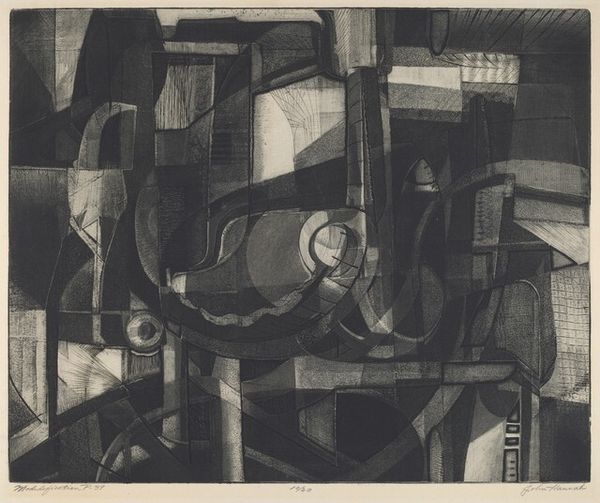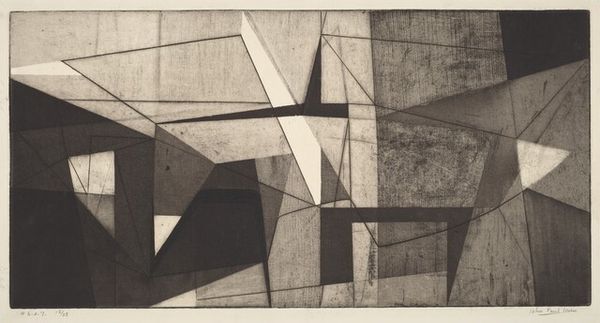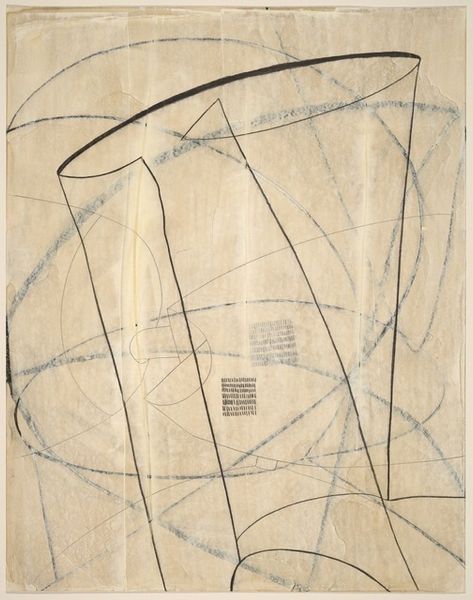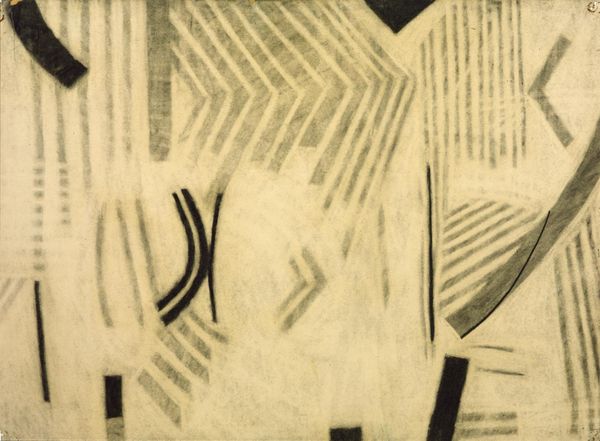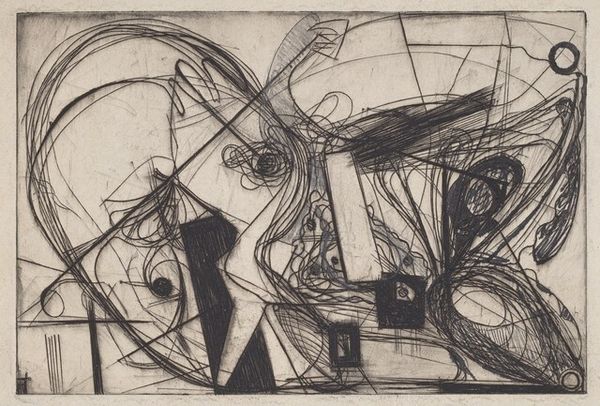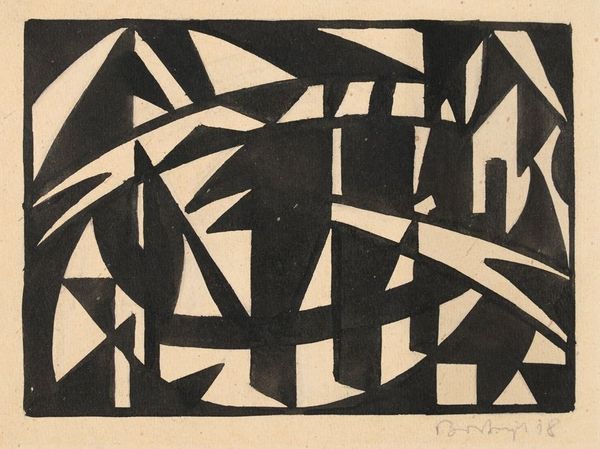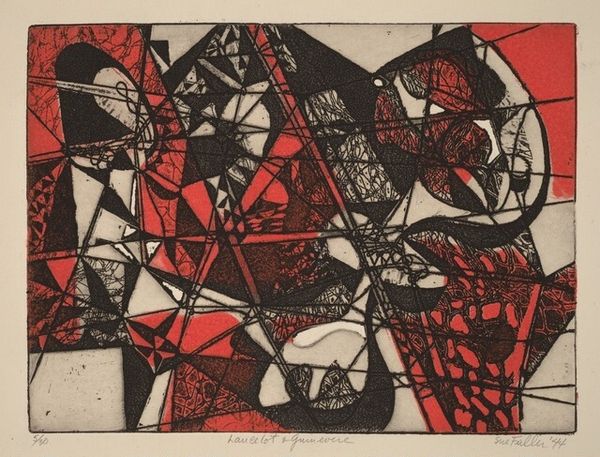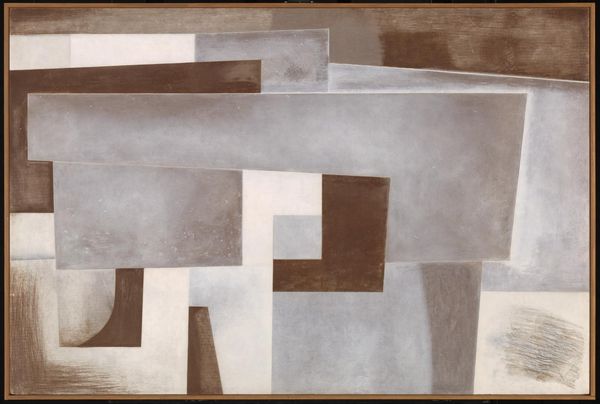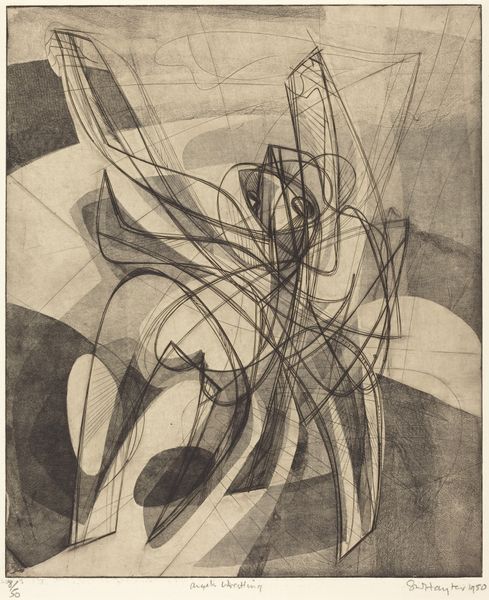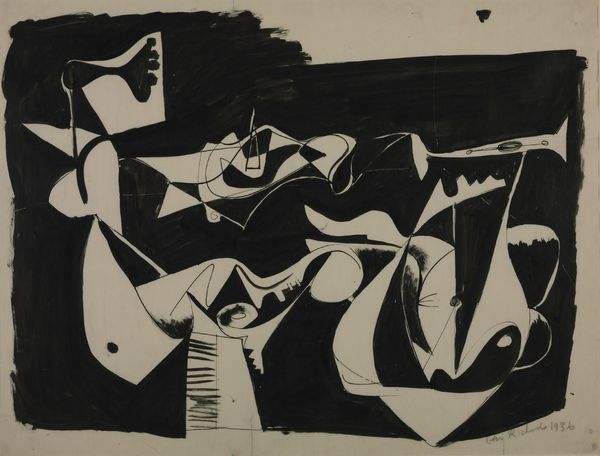
print, etching
#
abstract-expressionism
# print
#
etching
#
geometric
#
abstraction
Dimensions: plate: 505 x 604 mm sheet: 547 x 645 mm
Copyright: National Gallery of Art: CC0 1.0
Curator: So, here we have John Paul Jones’s etching from 1951, titled "Diversion." The printmaking process is central to understanding it, especially his mastery of the etching technique. Editor: Ah, my first impression is that it is… restlessly elegant. All these geometric forms – triangles, rectangles, curves—confined within a rigid frame, striving, perhaps awkwardly, for freedom. Curator: The choice of etching as a medium is significant; consider the labor. The lines, seemingly free-flowing, required careful planning and the application of acid to a metal plate. This deliberate, time-consuming process contradicts the appearance of spontaneity. What about its social context? Editor: I see a society rebuilding, attempting structure amidst lingering shadows. And in me, something tugs...a nostalgic echo of mid-century modern design! I wonder about the title; perhaps "diversion" hints at escaping harsh realities into pure form? Or escaping artistic tradition with an unrefined style? Curator: Good point. Its title asks for what distractions and forms of labour divert or distract? In mid-century America, printmaking was democratizing art. Consider the accessibility of prints compared to unique paintings; they allowed art to enter more homes, reshaping aesthetic consumption. Editor: That’s right! So the artist offers a controlled explosion onto a typically austere, cold medium. Despite the geometry, there's something undeniably human here. It doesn't feel cold or machine-made. Is that an intentional resistance against mechanical perfection, then? Curator: Precisely. Also the visible marks of the making process; the imperfections and variations in tone and texture all point to the human hand and a more accessible art for the masses during times of shifting labor dynamics. Editor: Thinking about this some more, the geometric components feel like fragments pieced together from memory… or a disassembled machine attempting, clumsily but persistently, to reconstruct itself. Curator: Well, now my thinking of this is redirected by you! I appreciate the shift. Editor: Absolutely, looking and reflecting critically opens up new opportunities for us all to learn.
Comments
No comments
Be the first to comment and join the conversation on the ultimate creative platform.
